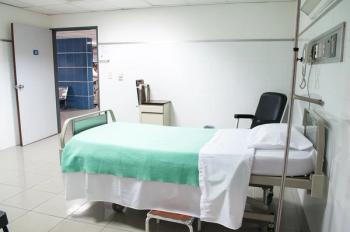
Stanford Hospital—A Canary in A Coal Mine
What does the latest news of Stanford Healthcare safety failures really tell us?
On July 11, 2017, Stanford Healthcare became embroiled in a public debate with the members of Service Employees International Union-United Healthcare Workers West (SEIU-UHW). Stanford Healthcare’s associate chief medical officer Ann Weinacker, MD, was forced to publicly respond to comments made during the Tuesday press conference held by the union workers. During this press conference, union workers claimed that the healthcare system had high rates of healthcare-associated infections due to inadequate staffing and training.
The union leaders and workers cited the financial penalties the hospital was hit with in 2016 and 2017 as a result of hospital-acquired infections. These financial penalties come in the form of only partial reimbursement from the Centers for Medicaid and Medicare (CMS).
Hospitals depend on CMS reimbursement of expenses for patient care. Following the
In their press conference, the union leaders highlighted these financial hits as proof that the quality of care at the hospital is poor and not enough measures are being done for patient safety. Moreover, they pointed to publicly reported data that show the rates of Clostridium difficile (C. diff) infections have risen, which puts patients and staff at risk.
California is
Although this event has garnered much
Some hospitals present internal data in terms of years or quarters and in terms of rates. How they present their data is an internal decision, and whichever method they use, that is how the data is presented data for key stakeholders.
On the other hand, all data reported through the Center for Disease Control and Prevention (CDC)’s
One aspect that can be seen by looking at just rates is an increase in C. diff rates for the hospital and an exhaustive list of worker complaints about an assembly-line mentality that treats necessary safety practices, such as cleaning and disinfection, as a lower priority. Many of the union members cite directives to push to make everything happen faster and with that comes safety failures. Although Stanford cites these claims as bargaining tactics for a new contract, the union workers are using the data to point to outcomes that are a result of patient safety failures. Some of the examples they use include, unknowingly being exposed to tuberculosis and pressure to clean rooms faster than proper disinfection methods allow for. The union workers also report poor compliance with posting isolation signage outside of patients’ rooms, alerting healthcare workers that personal protective equipment and specific cleaning practices are required.
The sad part in all of this is that these are common issues across most hospitals. Talk to any nurse and they will tell you that on several occasions, they’ve been told after the fact that a patient needed isolation. Ask an environmental services worker and they will agree that there is always pressure to clean a room faster to help turn over the room for the next patient. Better yet, I dare you to talk to an infection preventionist or member of a hospital’s infection control team. They will probably give you the same response I had, which was “ok, well those happen everywhere—Stanford just got caught.”
Sure, all the data is reported through NHSN and made publicly available, but few people even bother to research and read the data prior to seeking medical care. Those hospitals who do not meet the requirements may even be hit with CMS reimbursement penalties, but when this happens (and it happens a lot), it typically doesn’t receive much media attention. Of the handful of infection preventionists I’ve talked to about this report, not one was surprised. Sadly, it’s common practice that patients aren’t properly isolated or that signage isn’t up all the time. And, although some hospitals are utilizing newer and more effective technologies such as UV-disinfection equipment to help disinfect rooms, this practice still adds time to the clock between patient discharge and the next admission.
The healthcare industry is always in a battle against cutting costs, keeping patients safe, and maintaining high patient satisfaction; all while following federal regulations and requirements. Despite the alarmist nature that comes across in the media coverage on the Stanford case, we need to realize that this is only a glimpse through the window that is healthcare infection control and the struggle to follow best practices while working in an increasingly stressful environment. In this case, Stanford Health Care is the canary in the coal mine, alerting us that there’s a problem. They just happened to get the media scrutiny that comes with being pulled into a union debate involving the safety of employees. Unfortunately, Stanford Health Care is not the only canary—in fact, it is only one in a whole flock who have been giving us warnings of infection control and patient safety failures for decades. The question is, are we finally ready to listen?
Newsletter
Stay ahead of emerging infectious disease threats with expert insights and breaking research. Subscribe now to get updates delivered straight to your inbox.


























































































































































































































































































